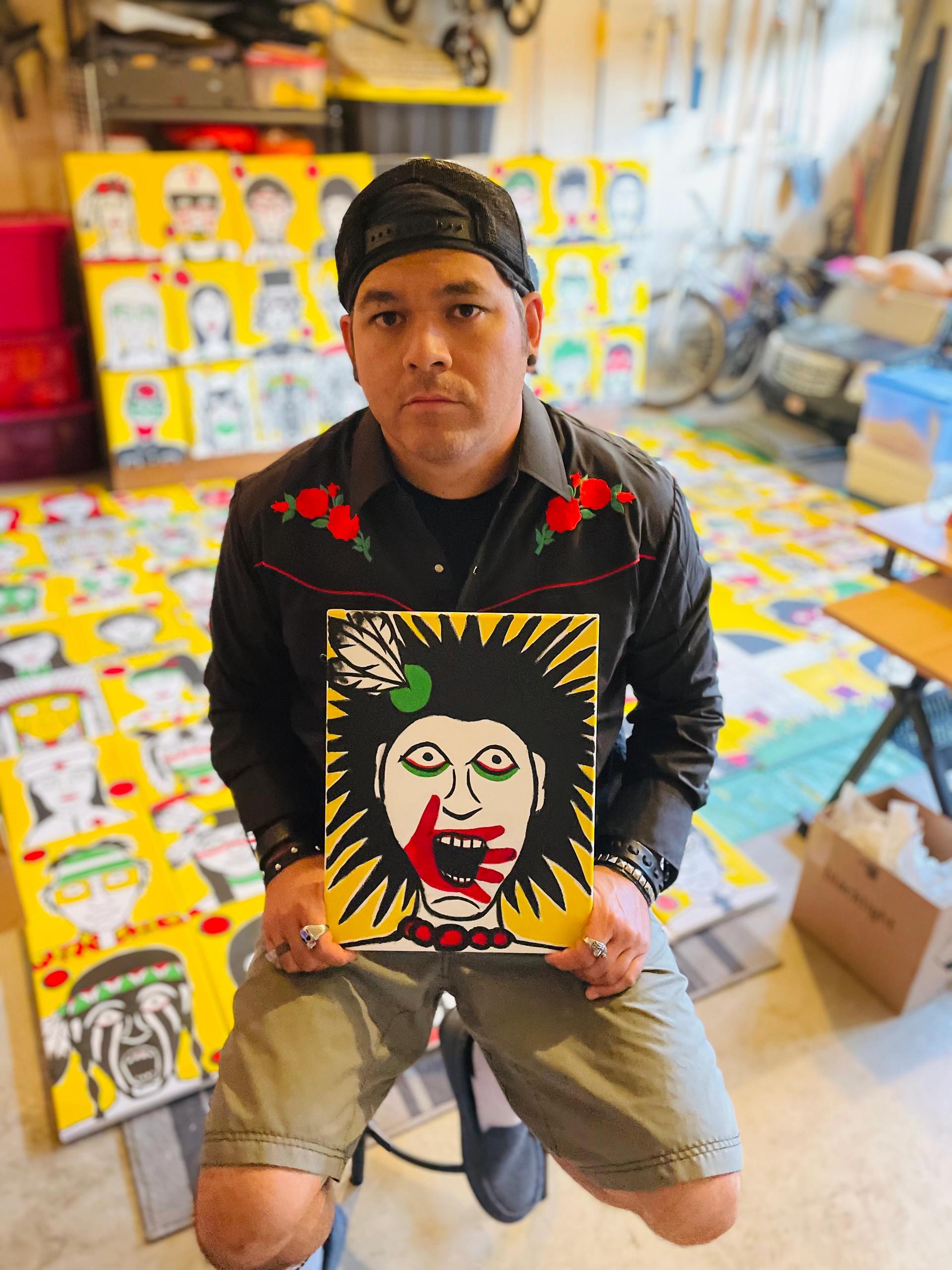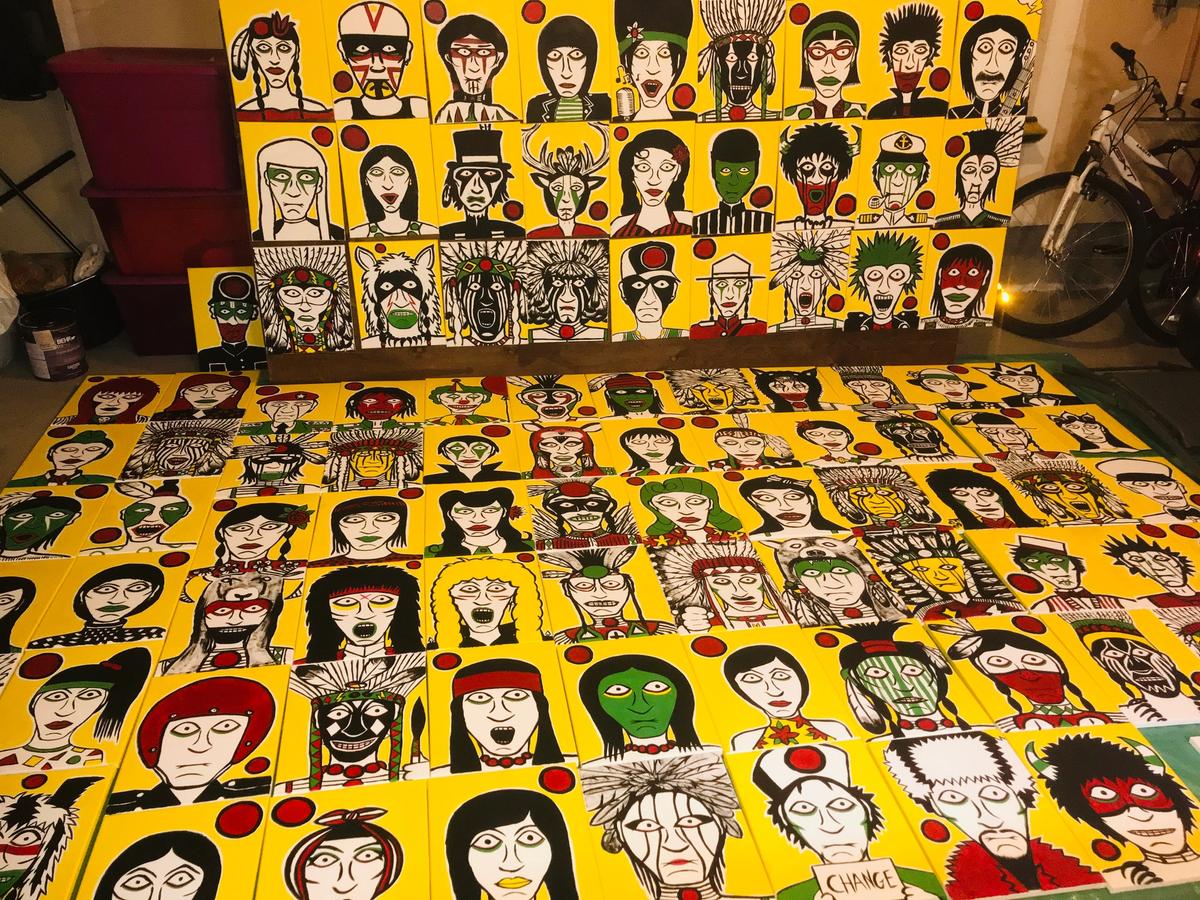When Johnny Bandura first started reading about the grisly discovery of mass graves holding the remains of 215 indigenous children at the Kamloops Residential School in May, he says, “I wasn’t sure exactly what I was going to do, but I felt the need to do something.” So the self-taught artist from the Qayqayt First Nation in British Columbia who grew up in Kamloops, and who is also a musician and has worked as a miner, went to the local art supply store near his current home in Edmonton to buy oil paints.
What emerged were graphic yet painterly comics-inspired portraits of “what these children could have become”, The first was a medicine woman, the second was a hunter. Others soon sprang to life; some dressed as nurses, hockey players and judges, some wearing traditional regalia. They all shared the same open, questioning eyes that demanded viewers return their gaze.
“The story made an impact on me since my grandmother attended the school during the 1930s,” Bandura says of his personal history with the site. “She never acknowledged her Indigenous heritage and culture. She was ashamed of being First Nations and never told anybody about her background. As a child, my brothers and sister attended programmes at the residential school, and you could feel a very large amount of negative energy in the building—it was scary.”

“I hope this piece will be able to immortalise the 215 lives lost,” Bandura says, speaking from his studio where the spirits of young victims of the residential school stare out from his mural in progress
While Bandura conceived of the paintings as individual portraits at first, he soon realised that they comprised a whole, forming a single, large, and very powerful mural. Bandura says he thought about his own young children as he painted the works, all set against a yellow backdrop with features etched in black and white, punctuated by vivid reds and greens. “I wanted them to be simple images that could be easily absorbed together,” Bandura says. “Instead of adding a lot of shading and depth to the faces, I wanted each of their individual qualities to be obvious.”
While the portraits were not commissioned, Bandura is now in discussion with the Kamloops Art Gallery about a show in the fall as well as another one at an Edmonton gallery. He is also considering publishing the portraits in a book format.
“I hope this piece will be able to immortalise the 215 lives lost,” Bandura says, speaking from his studio where the spirits of young victims of the residential school stare out from his mural in progress. “As well as to bring healing and understanding to all people about the devastation that happened at residential schools and during colonisation.”


